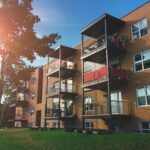Redlining is a term that carries the weight of a discriminatory past in the housing industry, a legacy of inequality that has shaped and continues to influence the social and economic fabric of neighborhoods across the United States. The practice of redlining began in the 1930s and, although outlawed more than 50 years ago, its impact lingers, evident in the racial and economic disparities that persist in many American cities.
The Origins of Redlining
The term “redlining” originated from the practice adopted by the Home Owners’ Loan Corporation (HOLC), a federal agency created during the Great Depression to evaluate mortgage lending risk. Maps were drawn of American cities, and neighborhoods were color-coded based on perceived stability and desirability for lending. Areas deemed high-risk for lenders were outlined in red, hence the term redlining. These red zones typically encompassed neighborhoods with high minority populations, particularly African Americans.
This practice was institutionalized further when the Federal Housing Administration (FHA) adopted similar guidelines for determining where to insure mortgages. Banks and other lenders followed these maps and guidelines, often denying loans to residents within the red lines or charging exorbitantly high interest rates. As a result, people in these neighborhoods were denied the opportunity to buy homes, improve their homes, or access other financial services that are essential for personal and community development.
The Effects of Redlining
Redlining has had long-term and profound effects on the neighborhoods it touched, leading to systemic inequalities that have been difficult to eradicate. The most immediate impact was on homeownership. Because mortgages were so hard to come by in redlined areas, residents were forced to rent, often at high prices, which precluded them from building equity and wealth through property ownership. This has contributed to the wealth gap between white and black families in America, as homeownership is a primary driver of wealth accumulation.
Moreover, the lack of investment led to the physical decline of these neighborhoods. Without access to credit, property owners could not afford to maintain or improve their homes. Over time, this led to the deterioration of the housing stock, resulting in lower property values and a diminished tax base. The reduced tax revenue meant less money for public services such as schools, parks, and street maintenance, leading to further decline.
Furthermore, businesses were less likely to invest in redlined areas, reducing employment opportunities and making it harder for residents to find work. This economic stagnation compounded the socioeconomic challenges already faced by the inhabitants of these communities.
The Impact on Health and Environment
The implications of redlining extend beyond economics and into public health and the environment. Studies have shown that redlined neighborhoods often suffer from higher rates of pollution, poor housing conditions, and inadequate access to healthcare and fresh foods. These factors contribute to health disparities, with residents experiencing higher rates of asthma, diabetes, and other conditions.
Additionally, redlined areas frequently lack green spaces, which affects mental health and community cohesion. The absence of trees and vegetation also exacerbates the heat island effect, leading to higher temperatures in the summer, which can be deadly, particularly for the elderly and those with chronic health conditions.
The Legacy of Redlining Today
Although redlining was officially outlawed with the Fair Housing Act of 1968, the damage had been done, and the practice had already become deeply ingrained in the housing industry. Even after redlining was prohibited, discriminatory practices continued under different guises, such as reverse redlining, where predatory lending targeted the same communities that had previously been denied credit.
Today, the impacts of redlining are visible in the racial segregation and uneven development patterns of many cities. Neighborhoods that were redlined in the past are often still characterized by lower home values, higher crime rates, and poorer public services. The enduring effects of redlining contribute to persistent racial and economic segregation and can even influence residents’ lifespans, with those in previously redlined areas often having shorter life expectancies.
Efforts to Address the Consequences of Redlining
Efforts to address the legacy of redlining have included both government initiatives and community activism. One of the most significant federal efforts has been the Community Reinvestment Act (CRA) of 1977, which encourages banks to help meet the credit needs of all segments of their communities, including low- and moderate-income neighborhoods. However, the effectiveness of the CRA has been debated, with critics arguing that it has not been robustly enforced and has not gone far enough to correct the disparities.
Community-based efforts have often led the way in addressing redlining’s aftermath. Local organizations have worked to improve housing conditions, create economic opportunities, and advocate for policy changes. For example, community development financial institutions (CDFIs) work within low-income communities to provide financial services and foster economic revitalization.
The Road Ahead
Confronting the legacy of redlining requires a multifaceted approach. Policymakers, financial institutions, and communities must continue to work together to create more equitable housing policies, ensure access to credit, and invest in the communities that were once deliberately marginalized. Education and awareness of redlining’s history and its present-day consequences are critical to this process.
Equally important is the role of new technologies and data analysis in uncovering discriminatory lending patterns and enforcing fair lending laws. Big data can reveal trends and practices that might otherwise go unnoticed, enabling regulators and activists to hold institutions accountable.
Redlining was a practice that served to institutionalize racial discrimination in the housing industry, with profound and lasting effects on the communities it touched. While the legal framework that allowed redlining has been dismantled, its legacy persists, evident in the socioeconomic and racial divides that mark many American neighborhoods. Overcoming this legacy requires sustained effort and a commitment to justice and equity in housing and beyond. The road to recovery is long, but with conscious efforts at every level, from local to federal, we can address the injustices of the past and move toward a more equitable future.
The future also depends on reimagining community development in ways that actively correct past injustices. This includes investing in affordable housing, ensuring that schools in formerly redlined areas receive equitable funding and support, and creating economic opportunities that provide a sustainable path out of poverty. The task is enormous, as it requires unraveling generations of systemic discrimination, but it is not insurmountable.
Strategies for Moving Forward
In order to move forward, specific strategies can be employed to help alleviate the conditions created by redlining:
Policy Reform: Policy initiatives at all levels of government can be powerful tools in reversing the effects of redlining. This includes stronger enforcement of fair lending and housing laws, zoning reforms to allow more mixed-income housing, and tax incentives to encourage development in underserved areas.
Economic Development: Investing in local businesses in previously redlined neighborhoods can stimulate economic growth. Microloans, small business grants, and mentoring programs can help local entrepreneurs, who are familiar with the community’s needs, to create jobs and services.
Community Empowerment: Residents in affected areas should have a voice in the development and policies that impact their neighborhoods. Empowerment comes through community organizing, education, and participation in local government.
Education and Advocacy: Continuing to educate the public about the history and ongoing effects of redlining can galvanize support for policies that address its consequences. Advocacy groups play a critical role in keeping the issue in the public eye and pressing for change.
Financial Education: Financial literacy programs in underserved communities can help residents make informed decisions about borrowing, investing, and saving, which can help break the cycle of poverty and underinvestment.
Technological Tools: Leveraging technology can also assist in identifying and combating modern-day redlining. Machine learning algorithms can analyze lending patterns to detect discrimination, while mapping tools can visualize inequities in resource distribution and urban development.
Challenges to Overcoming Redlining’s Legacy
Despite these strategies, several challenges remain. Financial institutions may be resistant to change, and deeply entrenched socioeconomic patterns are difficult to reverse. Discriminatory practices have evolved, and while they may not be as overt as redlining, they are no less destructive. For example, the subprime mortgage crisis of 2007-2008 disproportionately affected minority homeowners, many of whom lived in neighborhoods still suffering from the history of redlining.
The deeply embedded nature of racial bias in housing, lending, and investment makes for a complex issue that is resistant to quick fixes. It requires not only policy changes but also cultural shifts in how communities and their residents are valued and treated.
Redlining is not merely a chapter in a history book; it is a lived reality for many. The stark lines drawn on maps in the mid-20th century have morphed into the invisible but palpable boundaries of economic and racial segregation that we see today. These boundaries continue to influence where people live, learn, work, and how they interact with the broader society.
The struggle against the legacy of redlining is, at its core, a struggle for the soul of communities. It’s about ensuring that the opportunities for prosperity, safety, and wellbeing are not distributed based on race or the zip code into which one is born. It’s about fulfilling the promise of fairness and equality that is at the heart of the American dream.
As we grapple with these issues, we must recognize that the solutions are as complex as the problem itself. It will take a sustained and concerted effort by individuals, communities, institutions, and government at all levels to ensure that the vestiges of redlining are fully eradicated. This is not only a moral imperative but a practical one; for a nation’s health is measured by the well-being of all its neighborhoods and the opportunities available to all its residents.







